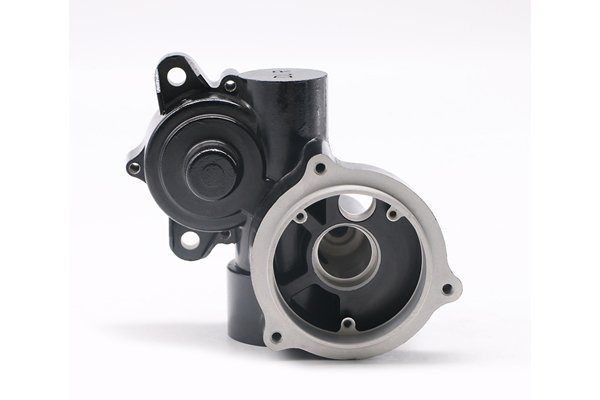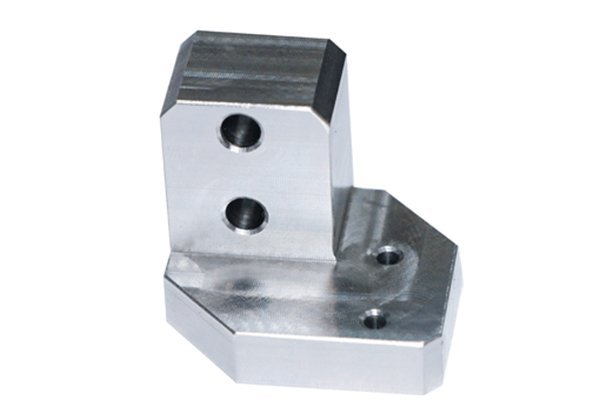Did you know that approximately 88% of manufacturers are planning to adopt advanced manufacturing technologies, including CNC machining, by 2025? With the increasing demand for high-quality, precision-engineered parts across various industries, CNC machining has become an essential aspect of modern manufacturing.
This blog explores the process and benefits of CNC machining for customizable products, giving you a comprehensive understanding of why it is a game-changer in the manufacturing landscape.
to CNC Machining
What is CNC Machining?
Computer Numerical Control (CNC) machining is a manufacturing process that utilizes computer software to control machine tools such as drills, lathes, and mills. It allows for the automated production of complex parts with high precision and repeatability. Unlike traditional machining, which requires manual input for each process, CNC machining is programmable, making it both efficient and versatile.
Significance of CNC Machining in Customization
As industries produce increasingly complex products tailored to specific requirements, the demand for customizable manufacturing processes has surged. CNC machining offers unparalleled flexibility, allowing manufacturers to create bespoke components with intricate designs. This capability transforms the way products are manufactured, setting a new standard for precision, speed, and quality.
—
Understanding the CNC Machining Process
Step 1: Designing the CAD Model
The first step in the CNC machining process involves creating a Computer-Aided Design (CAD) model of the desired component. This digital representation outlines every aspect of the part, including dimensions, tolerances, and materials.
Step 2: Converting CAD to CNC Toolpath
Once the CAD model is finalized, it must be translated into a format that CNC machines can understand. This is accomplished through CAM software (Computer-Aided Manufacturing).
Step 3: Setting Up the CNC Machine
With the toolpaths established, the next step is to prepare the CNC machine for production.
Step 4: Machining the Part
Now that everything is ready, machining can commence. The CNC machine follows the programmed toolpaths to cut, shape, and form the raw material into the desired component.
Step 5: Finishing the Part
After the main machining process is complete, finishing touches are added to enhance the part’s functionality and appearance.
Step 6: Delivery and Follow-Up
Once the parts are produced and inspected, they are packaged and delivered to the client. Follow-up can include:
—
Key Benefits of CNC Machining for Customizable Products
Understanding the CNC machining process is crucial, but it’s equally important to recognize its advantages, especially when it comes to customization. Below are the key benefits that CNC machining brings to the table:
One of the primary advantages of CNC machining is its ability to achieve high precision levels that surpass traditional machining methods.
CNC machining allows for intricate designs and shapes that can be challenging with conventional methods.
In a fast-paced manufacturing landscape, time is of the essence. CNC machining helps improve productivity substantially.
While there may be higher upfront costs associated with CNC machining due to equipment investment, the long-term savings make it highly cost-effective.

With the growing demand for tailored products, CNC machining allows manufacturers to meet clients’ unique needs efficiently.
The level of control offered by CNC machining translates into higher quality products.
—
Challenges and Solutions in CNC Machining Customization
While CNC machining offers numerous benefits, it’s not without its challenges. Here are some common issues that manufacturers may face, along with potential solutions.
Challenge 1: Initial Setup Time
Setting up a CNC machine for a new project can be time-consuming, particularly for complex designs.
Solution: Streamlining the design-to-production process with effective project management tools can reduce setup time. Comprehensive training for operators also ensures they can navigate the initial phase efficiently.
Challenge 2: Equipment Limitations
Not all CNC machines can handle every material or complexity level, limiting customization options.
Solution: Invest in high-quality CNC equipment that spans multiple capabilities or employ a varied fleet of machines, each specialized for different tasks, allowing for greater flexibility in production.
Challenge 3: Skilled Labor Shortage
There’s a growing skills gap in the manufacturing sector, making it challenging to find knowledgeable personnel.
Solution: Implement training programs and apprenticeships to develop talent within the organization. Collaboration with educational institutions can also help create a pipeline of skilled workers for the industry.
Challenge 4: Maintenance Costs
CNC machines can be expensive to maintain, particularly when they require part replacements or repairs.
Solution: Regular preventive maintenance schedules can significantly reduce long-term costs associated with machine failures. Investing in high-quality components and monitoring systems can also enhance longevity.
Challenge 5: Adaptation to New Technologies
Keeping pace with evolving CNC technologies may be overwhelming for some manufacturers.
Solution: Continuously engage in industry training and advancements, allowing engineers and operators to stay updated on cutting-edge technologies and techniques.
—
Future Trends in CNC Machining and Customization
As technology continues to advance, CNC machining is expected to evolve in exciting ways. Here are some future trends to watch:
Artificial intelligence and machine learning algorithms will likely play a growing role in CNC machining processes.
The convergence of CNC machining and 3D printing presents new possibilities for manufacturing.
The industry is moving toward more sustainable practices, and CNC machining will play a vital role.
As industries evolve, the need for more versatile materials grows.
With advancements in technology and communication, decentralized manufacturing may become more prevalent.
—
In this blog, we have explored the detailed process of CNC machining for customizable products, uncovering its numerous benefits that make it a vital component of modern manufacturing. From high precision and efficiency to the ability to create complex designs, CNC machining offers unparalleled advantages that cater to the ever-increasing demand for customized products.
However, challenges persist, including initial setup times and a skilled labor shortage, necessitating proactive solutions to optimize operations. Looking towards the future, trends such as AI integration, sustainable practices, and decentralized manufacturing signal an exciting evolution within the CNC machining landscape.
Understanding these dynamics is essential, as it empowers businesses to harness the full potential of CNC machining for developing innovative and high-quality products. As we navigate the evolving manufacturing environment, embracing these advancements will be key to staying competitive and meeting the ever-changing needs of the market.
In conclusion, CNC machining is more than just a manufacturing process; it is a transformative tool that can redefine how we approach production and customization, ensuring that businesses and clients alike benefit from quality and precision. As such, engaging with this topic and the underlying technologies is crucial for anyone looking to thrive in today’s manufacturing arena.






